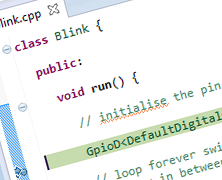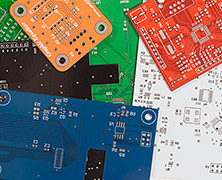Regular readers of this blog will be aware that when I want to get a batch of PCBs made I use the low-cost prototyping services available from the Chinese houses such as Seeed Studio, ITead Studio or Elecrow. It doesn’t really matter which one you choose because I’m convinced that...
From zero to a C++ STM32 development environment
posted by Andy
It’s been a while since I wrote an article about my stm32plus C++ library for the STM32 series of MCUs so I thought I’d combine a long overdue catchup with a step-by-step tutorial that will show you how to set up a completely free and unrestricted STM32 development environment from...
avr-gcc 4.9.2 and avr-libc 1.8.1 compiled for Windows
posted by Andy
It’s been about 3 years now since I last compiled up avr-gcc and avr-libc for Windows and it proved surprisingly popular with you so I’m now bringing you the latest, as of March 2015, versions of avr-gcc and avr-libc. I’ve also included avrdude 6.1 for completeness even...
Modding the STM32 F4 Discovery with a 25MHz clock
posted by Andy
In this article I’m going to show you how to do a straightforward modification to the STM32 F4 Discovery board that will change the onboard oscillator from 8MHz to 25MHz. Why do this Probably the main reason to do this is ethernet. If you’re prototyping an MII ethernet PHY then...
Arduino Uno R3 graphics accelerator shield uses no pins
posted by Andy
Hello and welcome to another in my series of unique hardware projects designed to bring you something useful that you’ve hopefully never seen before and at a price point that any hobbyist can afford. This project brings together the knowledge that I’ve gained over the last few years to bring you a graphics accelerator for the Arduino Uno R3 based on an ARM Cortex M0 core attached to a 640×360 LCD from the Sony U5 Vivaz cellphone. In previous articles you’ve seen how I’ve reverse engineered the Sony LCD and then used it in reflow oven and FPGA graphics accelerator projects. Introduction TFT LCD shields for the...
PCB soldermask colours: which one should you choose?
posted by Andy
I’m sure that all electronics hobbyists have, by now, noticed that anyone can get their PCBs printed at the online Chinese services such as Seeed Studio, ITead Studio and Elecrow. Many of you will have even used those services. I have, and I’ve used them often. Introduction When...
Exploring the KSZ8091RNA RMII ethernet PHY
posted by Andy
In my previous two articles (here, here) I’ve provided schematics and Gerbers for a breakout board that supports the Micrel KSZ8051MLL ethernet PHY. The KSZ8051MLL is an MII PHY manufactured in a reasonably easy to work with 48 pin quad-flat package. One of the burdens of MII is that it...
Hacking the HP Z800 Xeon motherboard into a standard case
posted by Andy
About four years ago now the company I work for were investing in some new servers for a project that we were working on and what turned up were quad LGA1366 socket Xeons with support for up to 192Gb of memory. In most cases two sockets were populated with Intel Xeon X5670 CPUs, hex core...






